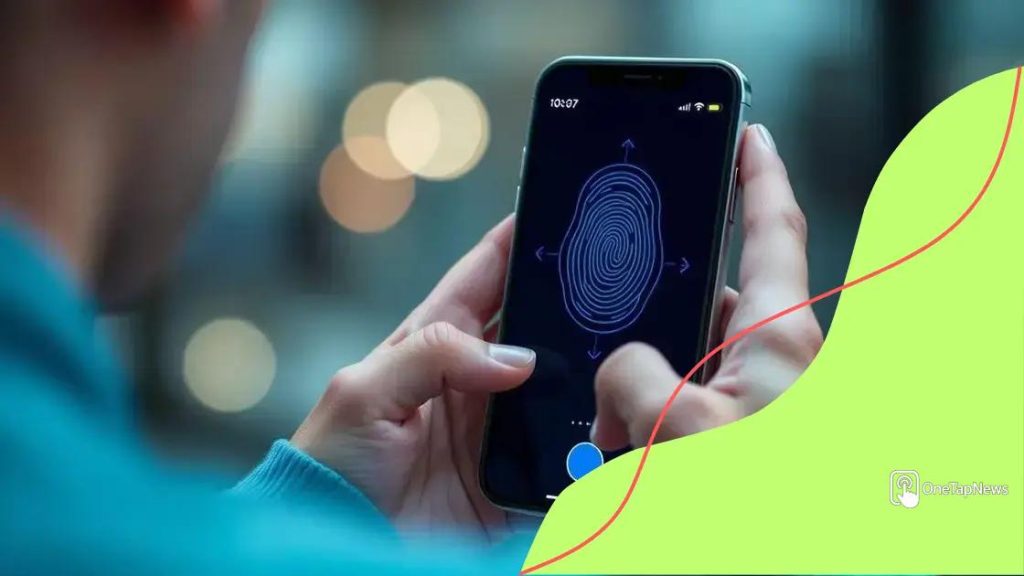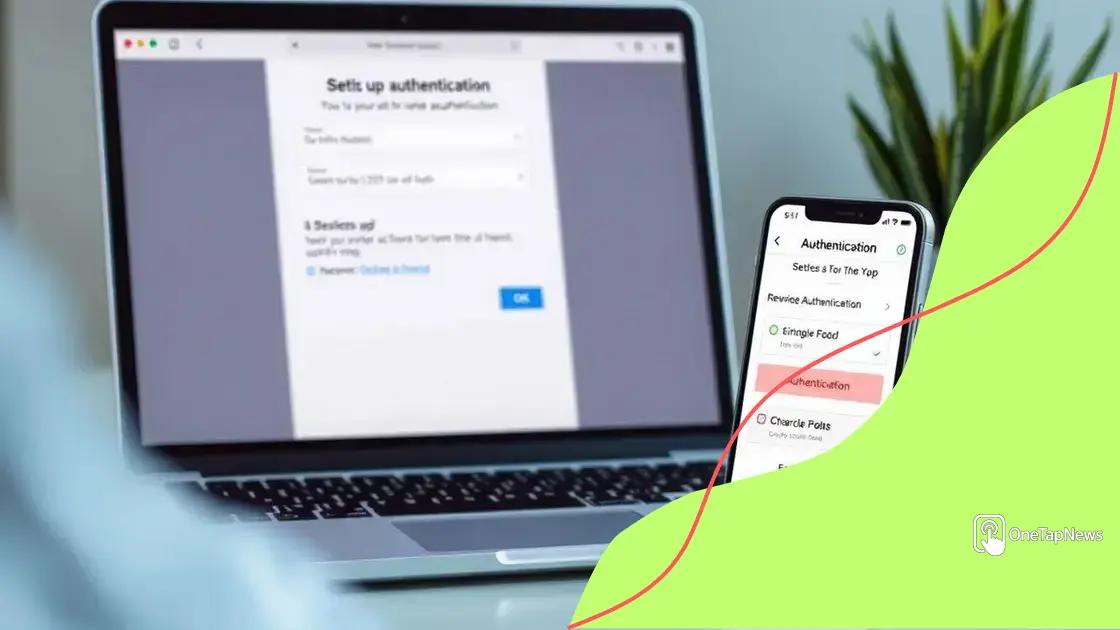Multi-factor authentication security: Protect your accounts now

Anúncios
Multi-factor authentication security adds an essential layer of protection to your online accounts by requiring multiple verification methods, significantly reducing the risk of unauthorized access.
Multi-factor authentication security is a crucial step in safeguarding your digital life. Have you ever wondered how much more secure your accounts could be with just an extra layer of protection? Let’s dive into why this matters.
Anúncios
Understanding multi-factor authentication
Understanding multi-factor authentication is crucial for anyone looking to enhance their online security. It provides an extra layer of protection for your accounts, making it much harder for unauthorized users to gain access.
When you use multi-factor authentication, you are required to provide two or more verification factors to gain access to your account. This means that even if someone manages to steal your password, they will also need another piece of information. Here’s how it works:
What is multi-factor authentication?
Essentially, multi-factor authentication (MFA) combines different types of information to verify your identity. This could be something you know (like a password), something you have (like a smartphone), or something you are (like a fingerprint).
Anúncios
Why is it important?
Many people underestimate the value of MFA. With increasing cyber threats, it’s vital to understand that a single password is not enough.
- It significantly reduces the risk of unauthorized access.
- It protects sensitive data more effectively.
- MFA alerts you to potential security breaches quickly.
Implementing MFA is a straightforward process. Most online services allow you to turn it on in your account settings. After activation, you’ll typically be asked to provide a code sent to your mobile device or an authentication app. This two-step process shields your account from various attack vectors.
Even if attackers successfully guess or steal your password, they would still be unable to access your account without the second authentication factor. This layered defense approach is what makes multi-factor authentication a powerful security tool.
In short, the best way to think of multi-factor authentication is as a gatekeeper. It guards your digital assets against compromise, ensuring that your information remains secure.
Benefits of multi-factor authentication
Benefits of multi-factor authentication are numerous and vital for anyone who values online security. With online threats becoming more prevalent, understanding these benefits is essential.
One of the most significant advantages is the added layer of security that it provides. By requiring more than just a password, you significantly reduce the chances of unauthorized access to your accounts.
Enhanced Account Security
Multi-factor authentication strengthens your account security by combining different types of verification. A password alone is often not sufficient, especially if it is weak or compromised. By utilizing an additional factor—like a text message or an authentication app—you make it harder for hackers to gain access.
Increased Awareness of Security
When you enable multi-factor authentication, you not only protect your accounts but also become more aware of your security practices. Regularly entering multiple verification methods keeps security top of mind. This increased vigilance can help prevent lazy security habits.
- It significantly decreases the risk of account takeover.
- Users become more engaged with their account security.
- MFA can prevent phishing attacks and unauthorized access.
Another crucial benefit is the peace of mind it brings. Knowing that your accounts are better protected allows you to use online services with confidence. This is especially true for sensitive accounts, like email or banking.
Lastly, many major online services now encourage or even require the use of multi-factor authentication. By adopting this practice, you are aligning yourself with best security practices and complying with industry standards.
How to set up multi-factor authentication

How to set up multi-factor authentication is a crucial step in enhancing your online security. The process is straightforward, and once set up, it significantly protects your accounts.
To start, you’ll want to navigate to your account settings on the website or application you wish to secure. Most online platforms today offer a dedicated section for security settings.
Enabling Multi-Factor Authentication
Once in the security settings, look for an option labeled “Multi-Factor Authentication” or “Two-Step Verification.” Activating this feature is usually just a click away.
Choosing Your Verification Method
After enabling MFA, the next step is selecting the verification method you prefer. Common methods include:
- Receiving a code via SMS.
- Using an authentication app, like Google Authenticator or Authy.
- Utilizing email for verification codes.
It’s essential to choose a method that is convenient for you but also secure. For example, authentication apps are considered more secure than SMS as they are less vulnerable to interception.
Once you choose your method, follow the instructions to link your chosen verification source to your account. If you’re using an authentication app, you will typically scan a QR code provided by the service.
After you have set everything up, most services will ask you to test your new security measures. Ensure that you can receive the verification code. This is important to confirm that your setup is successful.
Once you test your multi-factor authentication, consider saving backup codes. These codes can be valuable if you lose access to your primary verification method.
Common pitfalls to avoid
Common pitfalls to avoid when implementing multi-factor authentication can help you secure your accounts more effectively. While MFA is a great defense, there are a few mistakes that can undermine its effectiveness.
One major pitfall is neglecting to use backup options. Users often rely solely on one method of authentication, such as receiving SMS codes. If you lose access to your phone or it gets stolen, you may struggle to access your accounts. Always enable alternative methods, such as an authentication app.
Weak Password Choices
Another mistake is pairing multi-factor authentication with weak passwords. Even with MFA in place, a compromised password can still leave your account vulnerable. Always choose strong, unique passwords for each of your accounts.
Failing to Update Recovery Information
It is also essential to keep your recovery information up to date. Many people forget about this part. If you need to reset your authentication settings, outdated recovery emails or phone numbers may prevent you from regaining access.
- Ensure your phone number and email are current.
- Regularly check your account security settings.
- Update your passwords on a schedule.
Another common issue is ignoring alerts or notifications from your service provider. If you receive a notification about an unrecognized login attempt, act quickly. Ignoring these alerts can lead to compromises.
Some users also disable multi-factor authentication after initial setup due to inconvenience. However, this endangers your security. Always commit to using MFA and understand its importance in protecting your accounts.
Future trends in multi-factor authentication
Future trends in multi-factor authentication are shaping the way we secure our online identities. As technology evolves, so too do the methods we use to protect our accounts.
One significant trend is the rise of biometric authentication. Technologies like facial recognition and fingerprint scanning are becoming more common. These methods provide a seamless user experience while enhancing security.
Passwordless Authentication
Another emerging trend is passwordless authentication. Instead of relying on traditional passwords, users can authenticate using unique codes sent to their devices or through biometric data. This shift helps reduce the risk of password-related breaches.
AI and Machine Learning
Artificial intelligence (AI) and machine learning are also playing a vital role in improving multi-factor authentication. These technologies can analyze user behavior to detect unusual activities or access attempts. For instance, if you usually log in from your home office but try accessing your account from a different location, AI systems can trigger additional verification steps.
- Improving user experience while maintaining security.
- Reducing dependency on static passwords.
- Implementing adaptive authentication methods based on user behavior.
As we advance, integration with smart devices will become more prevalent. Imagine using your smartwatch to approve your login attempts. This interoperability can make multi-factor authentication faster and more intuitive.
Additionally, with increasing focus on privacy concerns, regulations may shape future MFA practices. Services may need to adopt stricter verification processes to comply with new laws, thus ensuring higher security standards.
FAQ – Frequently Asked Questions about Multi-Factor Authentication
What is multi-factor authentication?
Multi-factor authentication (MFA) is a security system that requires two or more verification methods to access an account, enhancing protection.
Why should I enable multi-factor authentication?
Enabling MFA significantly reduces the risk of unauthorized access, even if your password is compromised.
What types of verification can I use with MFA?
You can use various verification methods, including SMS codes, authentication apps, email verification, and biometric scans.
How can I set up multi-factor authentication on my accounts?
To set up MFA, go to your account security settings, look for the MFA option, and follow the prompts to select and verify your authentication methods.